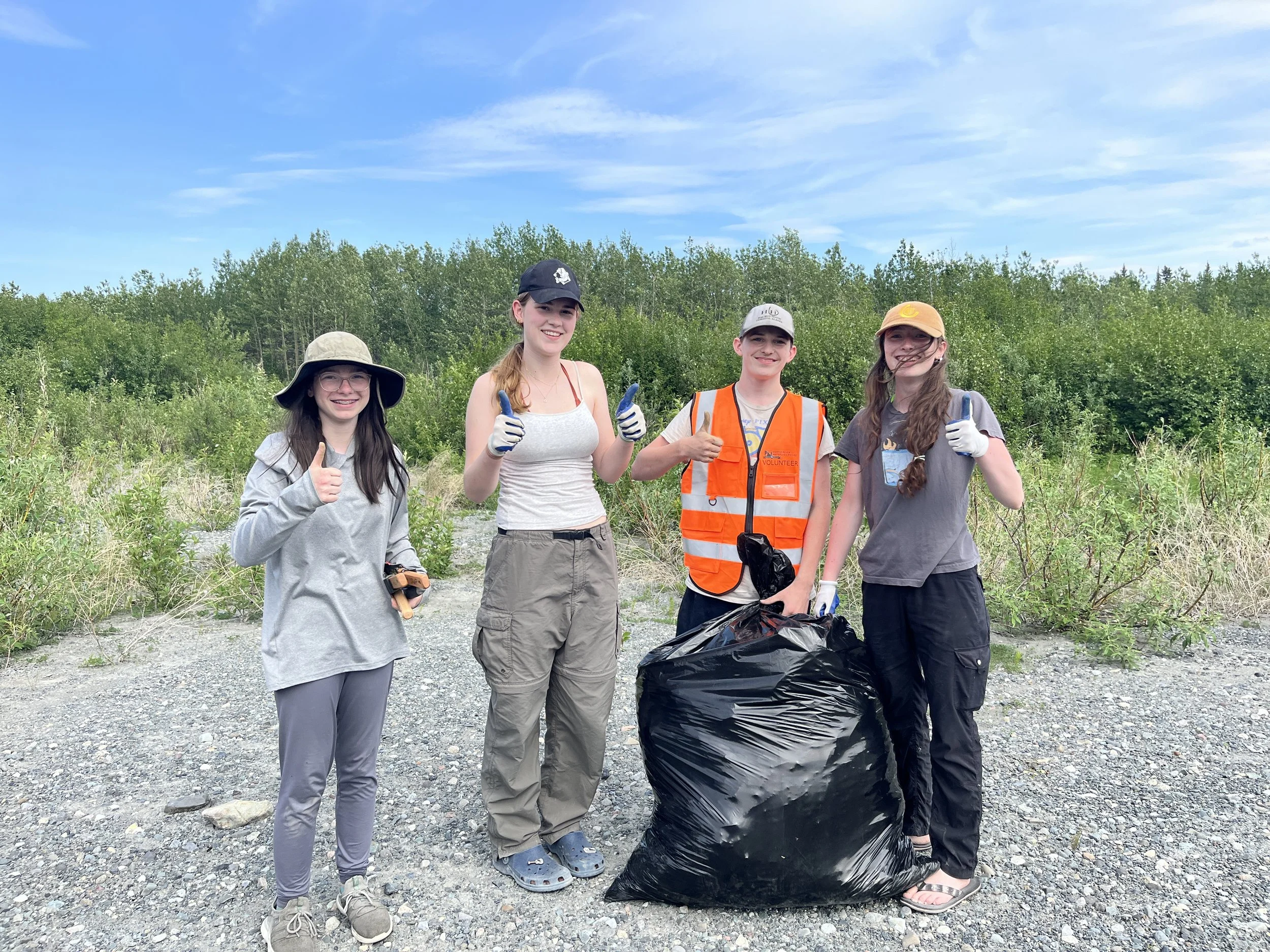Stop the Spread of Invasive Plants in the Copper River Watershed
Photo courtesy CRWP
White sweetclover removal project.
July 17, 2025
Copper River Watershed Project - News Release
Summer’s here, so it’s time to manage invasive plants! As the air and soil warm up during longer days, stubborn invasive plants go to seed and spread further into the environment. Many infested sites are highly recreated parts of the watershed, along major highways, and nearby disturbed areas such as construction sites and where land is developed — even in your yard!
An invasive plant is a species that is not native to the ecosystem and whose presence causes environmental, economic, or human harm. Invasive species are different from the less destructive non-native species.
Non-native plants are also not native to the ecosystem, but they do not cause damage and may even benefit us. It boils down to this: Invasive plants are destructive and should be removed; other non-native plants are friendly and can stay.
To keep this abundant watershed healthy and wild, we need to take action to stop the spread of harmful plants in our region. It might not seem like a problem now, but in places where invasive plants have taken over, it is more costly to remove — an ounce of prevention is worth a pound of cure!
COPPER BASIN
Invader: White sweetclover spreads aggressively on gravel bars, rivers, and roads. White sweetclover can disperse more than 350,000 seeds per plant, is especially prolific, and can easily overtake habitats along waterways, disturbed areas, or where frequent recreation occurs. Bird vetch is a non-native pesky invasive that intertwines and grows on top of native fireweed, yarrow, wormwood, berries, and so much more, hindering the natural role of native vegetation in the local ecosystem, as well as threatening medicinal and edible plants. White sweetclover and bird vetch take over other native plants' resources, change soil conditions and alter pollinator patterns. They shade native seedlings on floodplains and outcompete willow plants, which alters moose food and habitat. Native plants struggle to survive in the presence of these plant invaders.
Solution: Manual and mechanical control such as seed head clipping, digging the entire plant, and weed whacking can control the spread of white sweetclover. Do this before the development of seeds, and repeat multiple times in a season. Effective control includes cutting first-year plants (about 1 inch in height) before seeds emerge and removing mature second-year plants. Remember to seal filled bags and/or burn the plants completely so seeds don't escape into the environment. For bird vetch, pull and weed whack the plants, but the best control is by preventing it from getting there in the first place. When you work, drive, or park in an infested area, clean your car of dirt and debris and remove any seeds hanging onto the wheel wells, tire treads, bumpers, and other areas that can collect dirt or debris.
It's a big watershed, but if everyone in the region manages invasive plants in their yards and communities, we can keep the invaders from spreading further and clogging our rivers and streams. Organizing or volunteering time for weed pull events in your community can be a fun way to help keep the Copper River watershed wild and free from invasive species. Find more information on invasive plant management at https://copperriver.org/programs/invasive-plant-management/.

